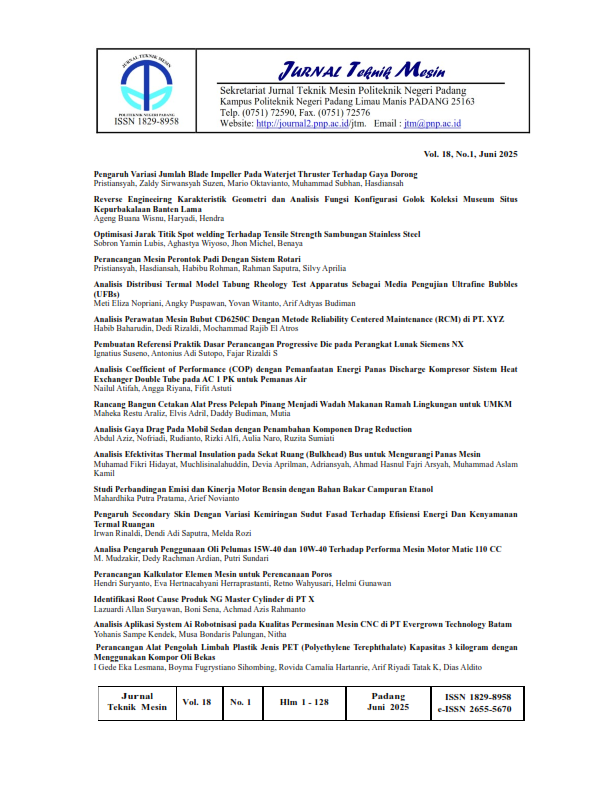Pengaruh Secondary Skin Dengan Variasi Kemiringan Sudut Fasad Terhadap Efisiensi Energi Dan Kenyamanan Termal Ruangan
Abstract
This study examines the effect of applying secondary skin with varying slope angles on the facade on energy efficiency and indoor thermal comfort. Facades with varying slope angles are designed to respond adaptively to external environmental conditions, such as solar radiation intensity, air temperature, and wind movement, with the aim of minimizing the building's thermal load and improving overall thermal performance. An experimental approach is used to evaluate the effectiveness of secondary skin with varying slopes. The thermal comfort parameters measured include air temperature, relative humidity, lighting intensity, and energy requirements for cooling, all of which are analyzed based on ASHRAE standards. The results of the study indicate that the use of facades with opening slopes of 10, 20, and 30 can reduce the room cooling load by 11.05%, 10.95%, and 10.80%, respectively. In addition, there was a decrease in the average Predicted Mean Vote (PMV) value of 0.059 (5.03%) at a slope of 10, 0.073 (6.29%) at a slope of 20, and 0.078 (7.20%) at a slope of 30. These findings indicate that secondary skin with variations in the slope angle of the facade is an innovative and sustainable approach in passive cooling strategies, which contributes to reducing energy consumption.
References
Imran., Iqbal, N., Kim, D. H., 2022. IoT Task Management Mechanism Based on Predictive Optimization for Efficient Energy Consumption in Smart Residential Buildings. Energy and Buildings, 257, pp. 1-12.
Sekretatiat Perusahaan PT. PLN (Persero)., 2020. Statistik PLN. Sekretatiat Perusahaan PT. PLN (Persero).
Kementerian Energi dan Sumber Daya Mineral Republik Indonesia. (2012). Peraturan Menteri Energi dan Sumber Daya Mineral Republik Indonesia Nomor 13 Tahun 2012 tentang Penghematan Pemakaian Tenaga Listrik. Jakarta: Kementerian ESDM.
Pemerintah Republik Indonesia. (2023). Peraturan Pemerintah Nomor 33 Tahun 2023 tentang Konservasi Energi. Jakarta: Kementerian Sekretariat Negara.
Marpaung, P., Widyantoro, T., Tarigan, S., Pitteriing, E., 2016. Prinsip Penghematan Energi pada Bangunan Gedung. Modul Manajer Energi di Ind. dan Gedung, pp. 214276.
Madhuri, N. S., Shailaja, K., Saha, D., Revathy, P., Glory,K. B., Sumithra, M., 2022. IOT integrated smart grid management system for effective energy management. Measurement: Sensors, 24.
Dawson, B., Spannagle, M., 2020. Intergovernmental Panel on Climate Change (Ipcc).
Choudhary, S., Singh Thakur, M., Dogne, N., 2014. AICMT: National conference on Alternative & innovation Construction Materials & Techniques TEQIP-II/Civil/AICMT-2 Passive Cooling Techniques, Design Concept and Ventilation Techniques.
Dimoudi, A., 2013. Passive cooling of buildings. Passiv. Cool. Build, pp. 3555.
Ricardo, D., 2022. Pengaruh Desain Secondary Skin terhadap Pencahayaan Alami dengan Penerapan Motif Islami. Sinektika J. Arsit, 19 (2), pp. 190197.
Nugroho, M. S. P., 2021. Seni Ornamen Nusantara Sebagai Secondary Skin Bagi Sun Control Pada Bangunan. Simp. Nas. RAPI XI FT UMS, pp. 14.













